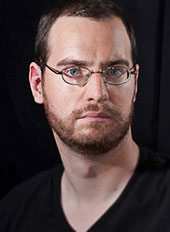Change in South Africa’s approach to HIV came under Mbeki’s successor, Jacob Zuma, when the National Department of Health considered, in late 2009, adopting treatment guidelines then newly recommended by the World Health Organization (WHO). Those included the sweeping measure of treating HIV-positive people when their CD4 count—a measure of the immune system’s strength—is 350 or below, instead of the 200 count that had been the treatment threshold previously.
“When we came out of HIV denialism, we had a very controlled HIV treatment program,” says Sanne. “We needed to scale it. We also needed a switch in treatment regimens, because we learned that the treatment we had been using was quite toxic and needed a lot of monitoring. We learned that there were better treatment regimens for drug resistance.”
In the new government’s National Department of Health, the deputy director general for strategic programs, Yogan Pillay, had learned the same things. And he was eager to learn more.
“Government officials like myself don’t always know the right questions to ask,” says Pillay, who oversees the department’s programs for HIV, AIDS, and TB. “Often, researchers will lead the process by suggesting which questions need to be answered. Is there, for example, resistance building up in patients? If there is, what drugs do they need to switch to? If clinicians are switching regimens, what is the practice implication, and what are the cost implications? Those things have implications from the individual patient to a systemic level with respect to the ordering of drugs.”
For answers, Pillay was introduced in 2009 to Johannesburg-based HE2RO team member Gesine Meyer-Rath, an SPH research assistant professor at the CGHD. Pillay knew that with Right to Care’s health database of 17,000 patients treated at Helen Joseph Hospital, HE2RO had access to one of the biggest treatment cohorts in the country, which meant that it also had the ability to generate authoritative statistics and stable models.
“HE2RO can tell us what’s happening to patients who started treatment in 2004,” says Pillay. “They can predict what is likely to happen to patients in the long term, and what we need to do to prevent patients from moving from first-line treatment to second-line drugs. We need to keep them on first-line drugs as long as possible, because the difference in cost between first-line and second-line drugs is five- or sixfold.”
Cost data are especially important to the government, because unlike countries that depend more heavily on international donor support, South Africa pays for 85 percent of its national HIV program itself, using domestic tax revenues. Meyer-Rath, a health economist and infectious disease modeler who creates the complex mathematical algorithms at the heart of HE2RO’s policy analyses, recalls one of several studies requested by Pillay’s department.
“We were asked to look at the cost of introducing new guidelines for HIV treatment,” she says. “They wanted to pull in more HIV-infected people, raising eligibility for both adults and children, and there wasn’t data out there on what that would mean in terms
of the number of eligible patients and the resulting cost. One of the questions we were asked is, what would be the cost implications of starting all children much earlier than was previously the case. There were studies that showed if you wait until children qualify for HIV treatment under the old WHO guidelines, their immune systems are so run down that you lose half of them. But the cost of pediatric HIV treatment hadn’t been analyzed before. So we had to do our own data collection, going into clinics and going through a sample of patient files.”
The problem, says Rosen, is that that kind of data collection is much harder than it sounds.
“In many places in Africa—and probably some in the United States—medical records and data systems are not well-developed,” she says. “Files get lost, and a patient will show up at a clinic and another file is opened with a new number, and there is no way of knowing that those files are for the same person. There is an endless series of those kinds of challenges. It’s very labor-intensive to develop a data set that just says how much something costs.”
“We look at every resource that has been used by a patient,” says Meyer-Rath. “We count every pill, every visit, and we look at the outcomes. In the end we can say that after X years of treatment, the cost of treating kids is this much, and the outcomes are this. We take all the data and we put it all in a gigantic mathematical model and run it for a couple of years and see what changes. Then we go back, collect more data to fill in the gaps, and start the process anew.”
Over the years, the data collected has helped to save many lives, and the job has yielded at least one major revelation: “You can collect all the epidemiological evidence you want,” says Meyer-Rath. “You can study the feasibility and all the other things, but if you don’t talk about cost and cost-effectiveness, you will not get an intervention off the ground. It’s not the first question. The first thing is to prove that it works, but it is almost always the second question.”
With the newborn study, the answer to that second question showed that treating infants sooner rather than later would save 80 percent of the costs of inpatient care—an average of 11 days during the first year of life. It turned out to be a good answer, says Meyer-Rath, because it resulted in a price tag that the government was “happy to pay.”
Life-Sparing Push
In another study, HE2RO looked at the feasibility of using nurses to manage treatment for AIDS patients, a task that had traditionally been performed by doctors.
“One of the big challenges in this country is that we don’t have enough doctors, but we do have nurses,” says Pillay. “But there is a lot of resistance to the idea of using nurses to initiate patients on antiretrovirals, both from doctors and nurses. We needed to know first, is it a good idea from a clinical point of view, can it be done, and third, what are the cost implications? HE2RO helped us in all three areas.”
In the last three years the South African government has doubled the budget for HIV treatment. It has tested 12 million people in a single year, is treating 1.7 million, and is budgeting to treat a total of 3.5 million people in the coming years. The life-sparing push started, says Meyer-Rath, with the willingness of the South African government to change its HIV policy and to act based on evidence, including that from HE2RO’s calculations.
“The thing about HE2RO,” says Pillay, “is they are a group of academics. They’re very rigorous and they are independent of us, so the integrity of the results is not questioned. They strike a good balance between being academic and rigorous and being part of the real world.”
“South Africa now has the largest antiretroviral program for treating AIDS in the world,” says Francois Venter, former president of the Southern African HIV Clinicians Society and an HIV researcher at the University of the Witwatersrand. “For a long time, we didn’t know how to get to that point. HE2RO was instrumental in doing a lot of the costing work, a lot of operational work, and a lot of intellectual work. They were the ones who said, ‘These are the choices you have, and this is what it’s going to cost.’ So for the first time, rather than being a gut-feel program, we have become an evidence-based program. HE2RO can take a lot of credit for that.”
For Fox, Rosen, and other CGHD academics who have split their lives between Boston and Johannesburg, the influence of
HE2RO is the fulfillment of an important part of their mission, as well as a validation of the value of multidisciplinary, policy-relevant research. But the biggest fulfillment will come when the tools, team, and skills they have built can deliver the evidence needed for policy decisions even after BU goes home.
“The initial collaboration between Boston University and HE2RO was formative,” says Lawrence Long, a South African health economist and a HE2RO deputy division head. “Over time the role has been to provide expert technical assistance to the local group and to build local capacity. They have done that.”
“It’s not realistic to assume that we can work here indefinitely,” says Rosen. “The funding environment is against that, and countries should have their own capacity to do this work. It’s very important to South Africanize our team. We don’t want to be an American organization in South Africa. We want to be a South African organization that is thriving in collaboration with Boston University.”














 Twitter
Twitter Facebook
Facebook
Comments
On 7 September 2012 at 1:55 PM, Buba Jeremie Mbemba (EOP’07) wrote:
Thanks a lot to let us know all this information. Let God be with you everytimes when you are doing your research.
On 26 July 2012 at 3:17 PM, Anonymous wrote:
It is heartening to see the coverage of such serious subjects. The videos did a great job of explaining without being boring.
On 21 July 2012 at 2:18 AM, Pat Mork wrote:
As a Peace Corps Volunteer (Community HIV/AIDS Outreach Project) I find HE2RO's work very heartening, particularly the capacity building aspects. I work in a deeply rural area, Tugela Ferry, KZN where XDR (extremely drug resistant) TB was initially documented. Here the HIV infection rate is approaching 40%. Hopefully, budgeting based on sound research will also have a ripple effect on education funding and jobs creation in these rural areas in the near future. I am proud to be the daughter and mother of a BU graduate!
On 13 July 2012 at 3:35 PM, Bill Ambler (CLA’67) wrote:
It is good to see that Boston Unniversity is involved in more than hockey tournaments and other social activities. I have 2 children in South Africa and it is impressive for me that my alma is so engaged in an operation designed to end with the indigenious population taking it over.
Post Your Comment